Top 7 Low-Carb Snacks to Boost Energy Your Body Needs Every Day
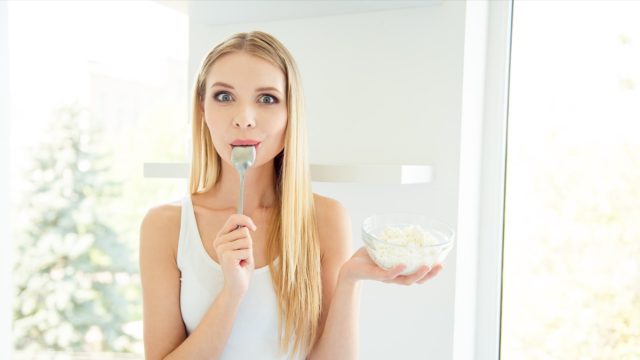
Low-carb meals and snacks are ideal if you want to maintain steady energy throughout the day without blood sugar spiking and dropping. "We've reached a critical mass of scientific evidence at this point," says Jeff Volek, PhD, RD. "And nutrition experts now agree low-carb diets provide benefits beyond disease management. In other words, they've been shown to not only help people with diet-related diseases, like heart disease and type 2 diabetes, they can also help generally healthy people reduce their risk of developing those diseases in the first place." Keeping healthy foods on hand makes sticking to a healthy diet so much easier. Here are seven low-carb snacks to boost your energy and support your health.
Hard Boiled Eggs

Hard-boiled eggs are an ideal low-carb snack that can be enjoyed on the go. "One large egg (50 grams) has approximately 6.5 grams of protein, 5 grams of fat, 0.5 grams of carbohydrate, and 70 calories," says Franziska Spritzler, RD, CDE. "This macronutrient profile makes them an ideal staple food for keto or low-carb diets. Eggs are a great source of several vitamins and minerals, including vitamin B12, selenium, and iron."
RELATED: I'm a Diet Expert, and These Are the Top 5 Foods I Avoid to Stay Lean
Cottage Cheese

Low in carbs and high in protein, delicious cottage cheese is an often-overlooked low-carb option. "Cottage cheese is especially good for people living with diabetes," says OSF Healthcare. "Cottage cheese is low in carbohydrates. In addition, the protein in cottage cheese slows digestion, which promotes satiety and can prevent blood sugar spikes. It can be a filling snack alongside fruit."
Avocado
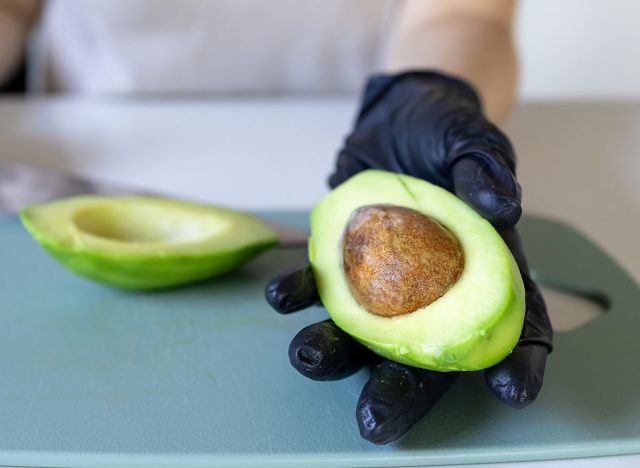
Avocados are another delicious and convenient low-carb snack. "Avocados are a really popular choice with people following the keto diet since a whole avocado contains only 17 g of carbs — of which 14 g is fiber — and 30 g of fat," says Flora Clarke, MSc, via ZOE. "They are also high in many vitamins and minerals, including potassium and B vitamins. Research shows that eating avocados regularly can reduce levels of "bad" cholesterol and improve your heart health."
Cheese
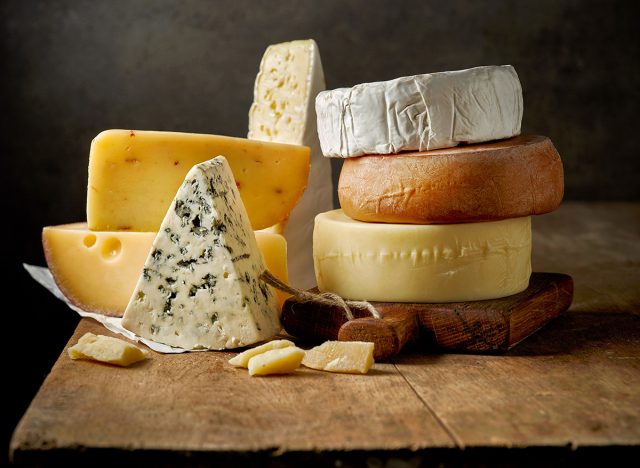
Cheese is another quick and easy low-carb snack. "Rich in flavor, hard cheeses like cheddar, Swiss, and provolone contain very little lactose," Spritzler says. "They're extremely keto-friendly; most provide about 1 gram of carb per 100 grams, although some may contain up to 3 grams."
RELATED: I Hit 60 and These 15 Anti-Aging Foods Keep Me Fit and Feeling 20 Years Younger
Greek Yogurt

Greek yogurt is a great choice for a healthy, low-carb snack. "If you're a yogurt lover, plain Greek yogurt is by far your best choice for low-carb or keto eating," Spritzler says. "It has fewer carbs and is thicker than other yogurts because more of the liquid whey (which contains the milk sugar lactose) has been strained during processing. Although carb counts vary slightly among different brands, Greek yogurt has about 3 grams of carb per 100 grams (a little less than ½ cup) and 5 grams per 170-gram (¾ cup) container."
Nuts
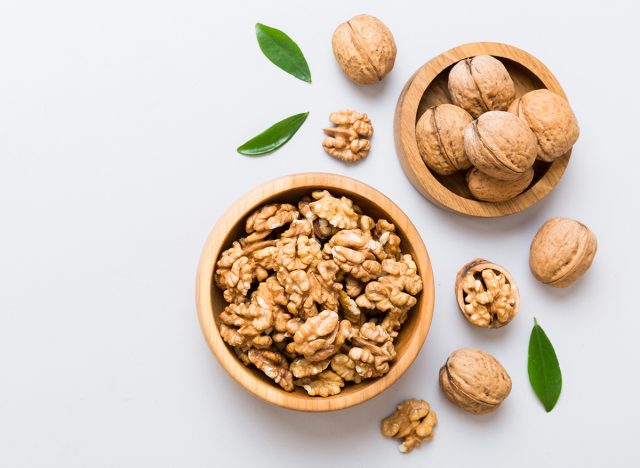
Low-carb nuts such as pecans are loaded with antioxidants. "Eating nuts as part of a healthy diet may be good for the heart," says the Mayo Clinic. "Nuts contain unsaturated fatty acids and other nutrients. And they're a great snack food. They are inexpensive, easy to store, and easy to pack when you're on the go."
RELATED: Thinking About Ozempic for Weight Loss? Read This First
Berries
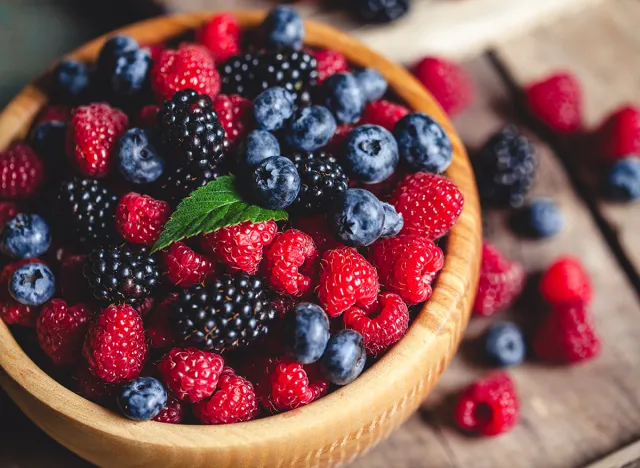
Berries are packed with nutrients and low in sugar and carbs. "A lot of fruits are difficult to include in a keto diet because of their high carbohydrate content," Clarke says. "But berries are relatively low in carbs and contain healthy antioxidants. Macronutrients per 3.5 ounces (100 g) in berries:
Strawberries: 8 g carbs, 2 g fiber, 0 g fat, 1 g protein
Blackberries: 10 g carbs, 5 g fiber, 0 g fat, 1 g protein
Raspberries: 12 g carbs, 7 g fiber, 0 g fat, 1 g protein
Blueberries: 15 g carbs, 2 g fiber, 0 g fat, 1 g protein."
And if you enjoyed this article, take advantage of these 15 Quick Ways to Lose Body Fat Percentage in a Week.




